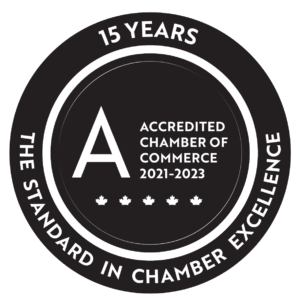The Province of Ontario has ordered the mandatory closure of all non-essential workplaces and reduced the list of businesses classified as essential. All businesses not covered by the updated Emergency Order are ordered to close effective Saturday, April 4 at 11:59 p.m.
Essential workplaces will be permitted to continue operations to maintain important supply chains. In addition to closures, the Ontario government issued a new emergency order under the Emergency Management and Civil Protection Act to prohibit organized public events and social gatherings of more than 5 people, effective immediately.
Peel Public Health strongly recommends that essential businesses that choose to remain open should work to limit access to their facilities and the number of occupants on their premises. They must also move their operations to delivery and pick-up as much as possible and maximize physical distancing, infection prevention and control practices, and cleaning. They should also consider active screening of their employees and staff for signs and symptoms of COVID-19.
Public Health Agency of Canada: Recommendations for cleaning and disinfecting public spaces (COVID-19)
- Surfaces frequently touched with hands are most likely to be These include doorknobs, handrails, elevator buttons, light switches, cabinet handles, faucet handles, tables, countertops and electronics.
- It is not yet known how long the virus causing COVID-19 lives on surfaces, however, early evidence suggests it can live on objects and surfaces from a few hours to
Choose a product that cleans and disinfects
- When cleaning public spaces, choose products that clean and disinfect all at once (e.g. premixed store- bought disinfectant cleaning solutions and/or wipes when available).
- Use only approved hard-surface disinfectants that have a Drug Identification Number (DIN). A DIN is an 8- digit number given by Health Canada that confirms the disinfectant product is approved and safe for use in
Create a cleaning procedure
- Operators of community settings should develop or review protocols and procedures for cleaning public spaces. This will help determine where improvements or additional cleaning may be
- Read and follow manufacturer’s instructions for safe use of cleaning and disinfection products (e.g. wear gloves, use in well-ventilated area, allow enough contact time for disinfectant to kill germs based on the product being used).
- Wash hands with soap and water or use alcohol-based hand sanitizer after removing
- Use damp cleaning methods such as damp clean cloths, and/or a wet Do not dust or sweep which can distribute virus droplets into the air.
- Contaminated disposable cleaning items (e.g. mop heads, cloths) should be placed in a lined garbage bin before disposing of them with regular waste. Reusable cleaning items can be washed using regular laundry soap and hot water (60-90°C). Clean and disinfect surfaces that people touch
- In addition to routine cleaning, surfaces that are frequently touched with hands should be cleaned and disinfected more often, as well as when visibly
- Shared spaces such as kitchens and bathrooms should also be cleaned more
For more information on cleaning and disinfecting click here.
Public Health Agency of Canada: Preventing COVID-19 in the workplace
Establish policies to reduce the spread of COVID-19 in the workplace and make sure these are communicated and understood by employees:
- Use the risk-informed decision-making guidelines for workplaces/businesses during the COVID-19 pandemic.
- Increase communication to staff and your customers about COVID-19 and measures you are taking for prevention.
- Post signs asking ill clients or customers to stay away from the
- Post signs encouraging good respiratory hygiene, hand hygiene, and other healthy practices
- Where feasible, adjust policies and procedures to reduce social contact, such as teleworking arrangements, flexible hours, staggering start times, use of email and
- Cancel or postpone all non-essential meetings or
- Evaluate the workplace for areas where people have frequent contact with each other, share spaces and objects, and increase the frequency of cleaning in these
- Consider ways that employees can practice physical distancing, such as increasing distance between desks, people in line-ups and
- Consider minimizing interactions between customers and your employees, such as limiting the number of customers permitted in your establishment or serving customers over the phone. Ideally, a 2-metre separation should be maintained, unless there is a physical barrier (e.g. cubicle, Plexiglas window).
Provide the necessary facilities and cleaning products to maintain a clean and safe workplace:
- Provide access to handwashing facilities and place hand sanitizing dispensers in prominent locations throughout the
- Ensure that high traffic work areas or frequently touched surfaces are cleaned and disinfected more often.
- Ensure that cleaning supplies are available for employees to clean and disinfect their
- Provide employees with any personal protective equipment recommended by occupational health and safety guidelines, and training to ensure it is used
Make sure employees know what to do when they have symptoms:
- Consider relaxing sick leave policies for employees who are ill. This includes suspending the need for medical notes to return to work, as it reduces the burden on an already stressed health care
- If employees must use public transportation to come to work, consider flexible hours to allow them to avoid peak travel
- Consider how employees will return home without using public transit if they develop symptoms at
- Prepare for increases in absenteeism due to illness among employees and their families or possible school closures.
For more information on preventing COVID-19 in the workplace click here.
When an employee tests positive for COVID-19
This resource explains the steps that Public Health takes when a person tests positive and the role that Public Health will play in assessing risk of exposure at a workplace. View positive cases in the workplace (PDF).
Business related resources:
- Brampton businesses
- Caledon businesses
- Mississauga businesses
- Business closure FAQ
- Guidance for food premises – Ministry of Health (PDF)
- Construction site health and safety during COVID-19
- Reporting non-compliance
- Occupational Health and Safety Act
- Stop the Spread
- Canada’s COVID-19 Economic Response Plan
- $50 million Ontario Together Fund
- Government of Canada’s business continuity planning web page
- Help for businesses: Emergency care package
- Ontario support for businesses
Free printable resources:
- Adult postcard (PDF)
- Adult poster (PDF)
- Proper handwashing (PDF)
- Entrance sign (PDF)
- Stay at home poster – version 1 (PDF)
- Stay at home poster – version 2 (PDF)
- Cleaning & disinfecting public spaces (PDF)
- Preventing COVID-19 in the workplace (PDF)
- Mask use information (PDF)
For more information, follow us on Twitter at @regionofpeel and Instagram at @peelregion.ca
Current as of April 13, 2020




